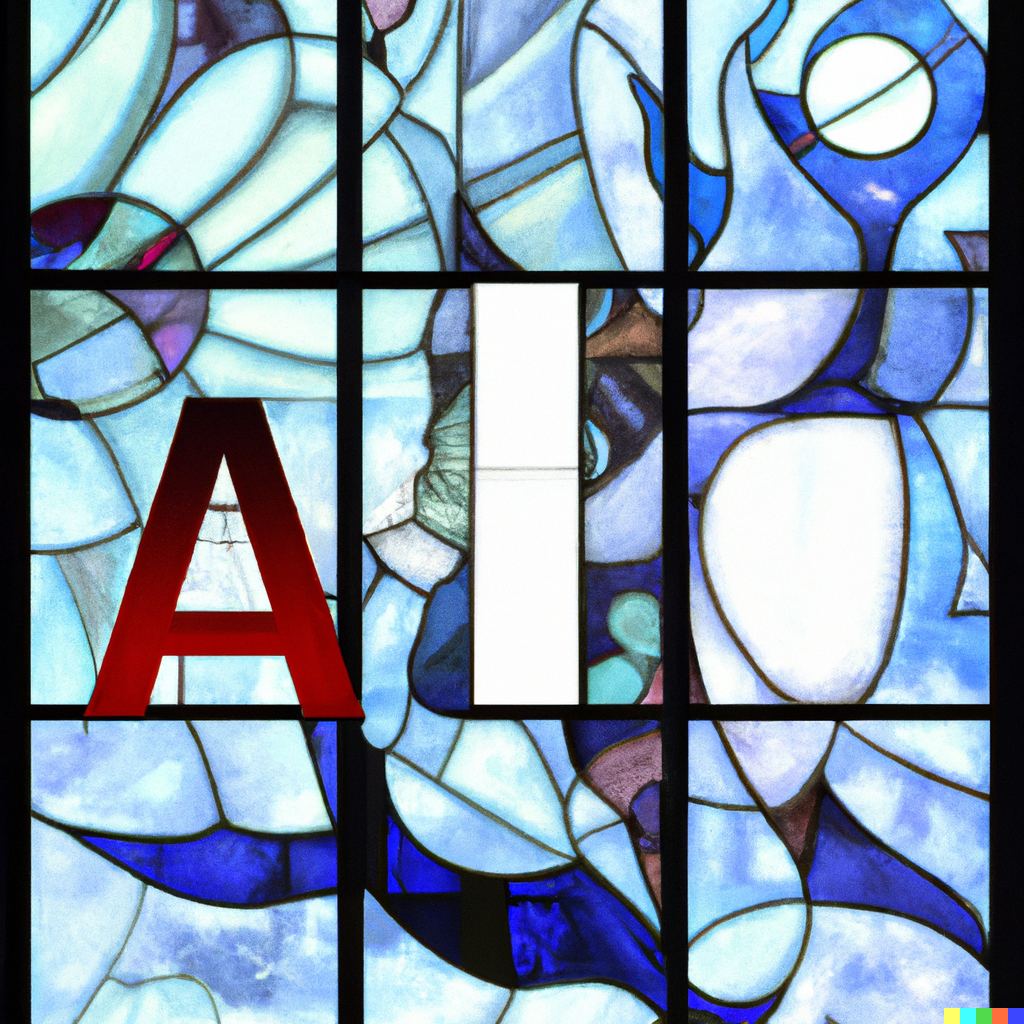
Image created by Lainie Pomerleau using DALLE-2
Integrating AI into College Writing and Communication Classes
AI (Artificial Intelligence) platforms like ChatGPT and Dall-E2 have galvanized higher education, particularly for those of us who teach college writing. The full potential of AI is not yet realized, and the AI platforms are limited. ChatGPT and DALL–E2 cannot comprehend the materials they gather. Those materials frequently reflect commonly held biases, and the compiled information supporting ChatGPT ends with 2021 (meaning it does not “know” anything from 2022 onwards). ChatGPT cannot do advanced mathematics, and, at least in its current state, cannot produce persuasive professional or advanced college writing.

Figure 1: ChatGPT homepage. This essay is discussing the free-to-use ChatGPT. The updated, paid ChatGPT4 is also available and has more problem-solving capabilities, but I did not use it in my Spring 2023 classes because of the associated cost.
Even AI’s most ardent detractors cannot say with confidence that AI has the potential to change how we write and communicate. However, what gets lost in the discussions of fears of academic dishonesty is the controversy that machine assistance is still human-led assistance. AI is a human-programmed tool analogous to digital calculators or even smart household appliances. It is no more reasonable to believe that someone who types a descriptive prompt into DALL-E2 is an artist – or that someone who types a suggestion into ChatGPT is a college or professional writer – than it is to believe someone punching numerical equations into a calculator is a mathematician (the graphing calculators of the 1990s invited similar fears). It is reasonable, however, to accept AI as a tool that offers college students ways to efficiently work through early-stage process and organizational tasks so they may conceptualize and produce their final products more quickly.
My article explores how ChatGPT and DALL-E2 can be integrated into college composition and technical professional writing courses as support for process assignments. This essay reflects on my integration of DALL-E2 and ChatGPT in my Spring 2023 composition courses at Georgia Tech. I explore how these tools help students focus on specificity and revision processes by asking them to strengthen AI-created pieces through non-AI interventions.
Why use AI in writing and composition courses?
The writing process may be universally understood as a series of decisions and the texts those decisions shape that build toward a final product whose trajectory may be divided into three general areas: early process/initial generation, mid-process/organization and drafting, and late process/review and revision.
Each step of the composition process is integral to student success in writing courses, but each step does not receive an equal amount of production time. For example, many of my assignments, especially those early in the semester, focus more time on early stage and late-stage process assignments:
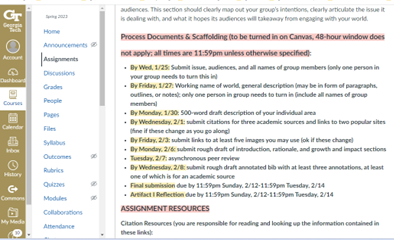
Figure 2: Example of ENGL 1102 scaffolded process assignments from our first artifact, the Critical Creative Statement
I dedicate extra time to the early-stage process because students can have an especially challenging time warming up to some assignments, especially if the course theme or subject matter is not particularly engaging for them, or if they find writing challenging. Doing so, however, can mean later stage review and revision work may be hurried. I make up for this by offering students the opportunity to revise two of their major assignments for new grades. Revision on the backend of assignments is effective, but its potential to disrupt other assignments led me to consider what role AI could play in my classes.
For example: I felt that AI deserved a place in our classrooms, and that it could be used as a time saving tool that helps students see the writing as a process of revision decisions. I was having trouble articulating just why I thought this was an innovative idea, which is a situation many of our students find themselves in when creating argumentative positions and thoughtful analyses. I thus decided to ask ChatGPT to create a proposal for using ChatGPT and DALL-E2 in the college composition classroom as an experiment. Here is what it returned:
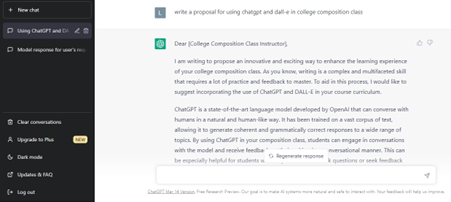
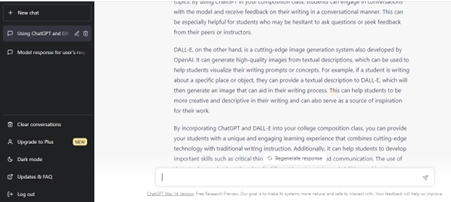
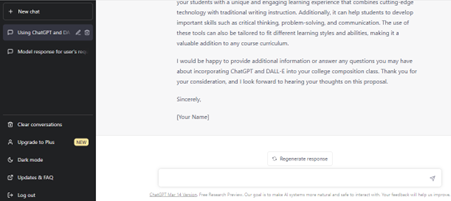
Figure 3: ChatGPT generated proposal for using AI in college writing classes.
The proposal does not provide a distinct answer to the inquiry at hand, and its central argument is poorly articulated. The text simply lists things AI can do instead of explaining why they are important. I could easily do that, too (my first drafts typically include over-description and vague assertions), but what would have taken me half an hour, or taken an undergraduate student an hour or work done over several classes, took seconds.
There was nothing Chat-GPT produced that I could use as-is, but its argumentative shortcomings are precisely what clued me into AI’s classroom potential. The promise of early process assignments lay in their potential, rather than their initial, content, and AI’s strength is its ability to quickly compile and organize data in response to a prompt, which is the work like freewriting, concept mapping, or storyboarding have done. With the proper student input, AI can bridge the free-flowing but disorganized free-write stage to more quickly see how a clearly defined position can grow from a series of statements about a subject. ChatGPT can generate a vague, overly descriptive rough draft as easily as any student can, just much, much faster, which also allows students to move through several time-consuming process steps much, much faster. Students can use the extra time afforded by ChatGPT to focus on revising and refining their assignments.
AI-Based Multimodal Composition Assignments
I have integrated ChatGPT into this semester’s process assignments for two upcoming, ENGL 1102 projects (gameplay instructions and a final immersive, neomedieval world and game website), and I have encouraged students to use DALL-E2 throughout the semester to help generate images for visually intensive projects and presentations. I have invited student feedback about using AI in their own work to ensure greater student buy-in, and I plan to use that student generated feedback to build an “AI Usage Guide” for subsequent classes so I may establish some AI best practices informed by student writing.
DALL-E2
My Spring 2023 ENGL 1102 class asks students to create immersive worlds, neomedieval fantasy tabletop or video games in collaborative teams. Each game must take a clear position on a current socio-political-scientific issue, which included over-fishing, deforestation, student debt, political and economic corruption, wealth inequality, Alzheimer’s care, and political divisiveness. Game play must help bring about some kind of desired change in specified audiences (anything from raising awareness to political activism).
DALL-E2 was the first AI platform integrated into our classwork. While sites like Canva or the Adobe suite of products can produce clear visuals, those platforms lack creative flexibility or require training that our class cannot provide. The final product – an issue-driven, immersive, role-playing game and website – is supposed to be professional and compelling. Visual elements commonly associated with high fantasy neomedieval games (hand-drawn fantasy maps, mythic beasts, monsters, and characters) are time consuming and would likely exceed the skill level of many students.



Figure 4: Visual drafting images created with DALL-E2. Image created by Georgia Tech student Clay Stevens.
ChatGPT
I decided to bring my students into the conversation before formally announcing we would be using ChatGPT for early-stage drafting. As a community, my students and I decided that using ChatGPT for early-stage work is akin to using a calculator; it speeds up the process, but you still must know what to do, what you are looking at and, especially, how to create and support convincing position statements. We decided ChatGPT was useful for early drafting and writing but that complete transparency was necessary to let audiences know they were reading original work, and that early citation was key to assuaging fears about AI and academic honesty. We decided that all groups or individuals using AI would include an addendum or specific page with the following information:
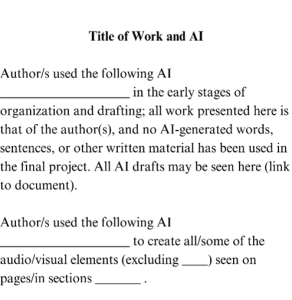
Figure 5: Template for citing when and how AI was used in a project.
I included the option to use ChatGPT in the third assignment of the semester, which asked students to create instructions for their games.
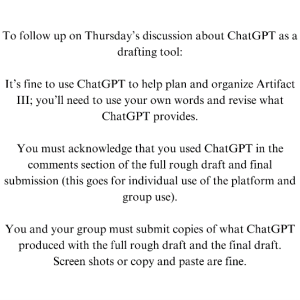
Figure 6: Incorporating AI into drafting Artifact III, Gameplay Instructions.
I announced that inclusion by showing students the game instructions I had asked ChatGPT to create prior to class:
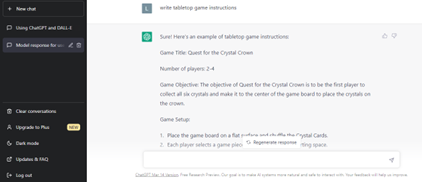
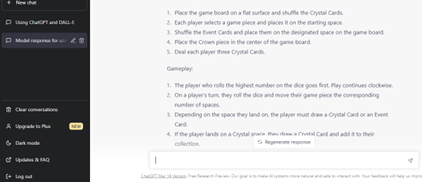
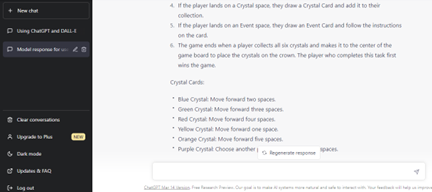
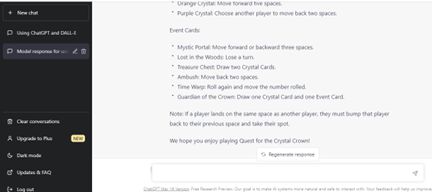
Figure 7: ChatGPT created game instructions.
Students were kinder to this text than they had been to the proposal. They thought the game seemed “cute” and “easy to play” but felt the instructions were generic, clear, and not particularly compelling. We discussed how ChatGPT’s instructions could be revised to connect more fully with an audience, and then the choice was theirs to make as they composed their instructions.
While some groups decided against using AI or their gameplay instructions, many did indeed draw on its function for their initial drafts to help them organize their material. The prompts they entered were complex, as they had already decided game mode and play. Students revised their AI-assisted draft instructions to include a clearer relationship to the issue driving the game.
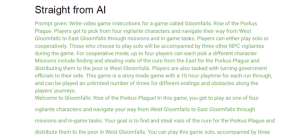
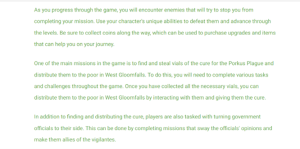
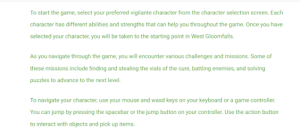
Figure 8: Excerpts from sample instruction drafting with ChatGPT, courtesy of Georgia Tech students Vittorio Prete, Aparna Rammohan, and Divya Tulluri. Their draft included the following AI attestation: “We created out outline from chat gpt [sic] (the unedited AI generated work is pasted at the bottom of the document below our Rough Draft).”
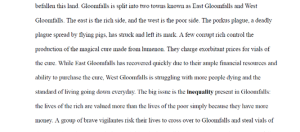
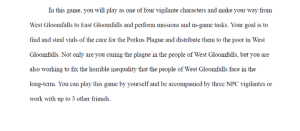
Figure 9: Revised final gameplay instructions, courtesy of Georgia Tech students Vittorio Prete, Aparna Rammohan, and Divya Tulluri.
I also gave students the option to use ChatGPT to draft content for their final project, a website dedicated to the game and the world they created that incorporated their three previous artifacts. Students were less interested in using AI for their websites because so much of the content was already well beyond the initial drafting stages where AI is most useful.
I integrated AI into my classes a little before the mid-point of this semester, so I admittedly did not have the chance to see what a full semester of AI-assisted drafting would look like. I intend to incorporate AI in early stage drafting in the LMC 3403 course I will teach this summer and in next fall’s ENGL 1101 sections.
The Future of AI in College Writing Courses
My purpose here is not to insist on the wholesale adoption of AI in college writing and composition classes. ChatGPT and DALL-E2 only became publicly available at the end of November 2022, and college writing faculty and students are still trying to figure how best to use these tools.
The majority of AI resistance is grounded in fears about academic dishonesty and plagiarism. These fears, while not without merit, should not curb conversations about AI’s potential as a composition teaching tool. The limited pedagogical efficacy of software like TurnItIn (which claims to detect similarity, not plagiarism) and its new, AI-sensitive update is beyond the scope of this piece (for those interested, please see Dr. Shane Snyder’s excellent piece arguing against such methods). While I do not use any kind of plagiarism software, I do understand concerns about students passing off AI work as their own, and I am not naïve enough to believe some students will not or have not already attempted to turn in AI-generated work. I would argue, however, that the same fears have been around since the availability of the internet. Calculators, computers, Google, Wikipedia, and smart phones were all met with similar approbation but are now valuable parts of the classroom experience for many students and faculty. There are multiple ways to avoid AI academic dishonesty, including assignment design (i.e.by asking for multiple draft submissions) and by taking away temptation (nothing takes the illicit ‘fun’ out of something more than making it an assigned requirement), and giving students a way to use AI as a springboard, rather than a final product.
I would also mention that focusing solely on AI’s potential impact on plagiarism and academic dishonesty ignores its potential to help students learn to recognize ineffective writing in a way that does not focus on their own fears about their work. Creating prompts for AI-generated texts offer practical exercises in using specific writing and grammar, and examining the inadequacies of an AI-written piece makes the importance of evidence-based argumentation crystal clear. AI’s limitations in argumentation and originality are precisely what makes it a good fit for the initial stages of the composition process, and what will likely allow a greater number of college students to see the value more easily in transferable, multi-disciplinary composition skills like collaboration, planning, and revision.
Georgia Tech’s Writing and Communications Program (WCP) is uniquely positioned to create valuable processes for students and approaches for faculty by adopting a responsive, integrative approach to AI in the writing classroom. WCP’s WOVEN (Written, Oral, Visual, Electronic, and Nonverbal) approach to writing, and the School of Literature, Media, and Communication’s dedicated approach to using and responding to recent technologies with innovative, cross disciplinary solutions makes our writing classrooms well suited to meeting the challenges and greeting the change they bring.

